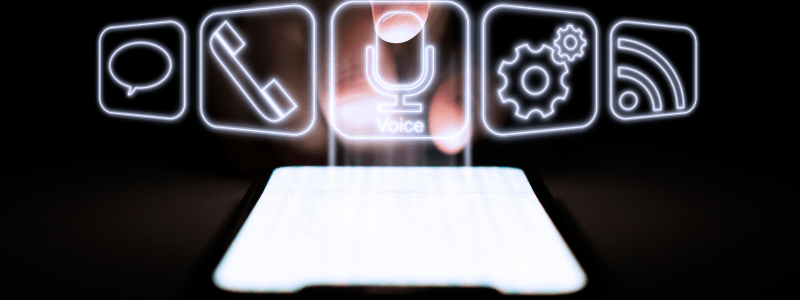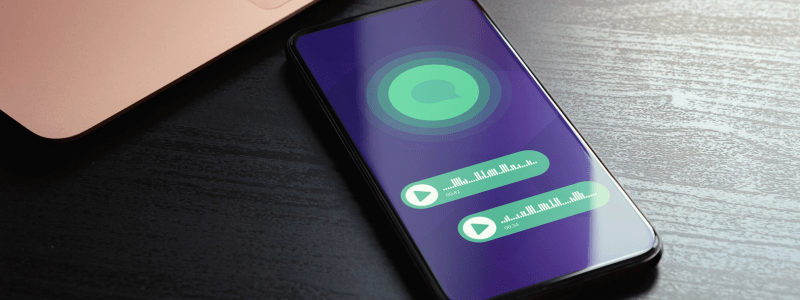The way we communicate is constantly evolving. While texting, social media, and instant messaging dominate, voicemail remains a crucial tool, particularly in professional settings. Yet, there are times when we want to leave a voicemail without the hassle of calling someone directly. This article explores how to leave voicemail without calling and how you can achieve just that.
Understanding Voicemail
What is Voicemail?
Voicemail is an electronic system that records and stores voice messages for later retrieval by the intended recipient. It functions much like an answering machine but is more integrated into modern telecommunications systems.
Traditional Voicemail vs. Modern Voicemail Services
Traditional voicemail required a direct phone call to record a message. Modern services, however, have evolved, allowing users to leave voicemails without initiating a call. These advancements provide more flexibility and convenience.
The Need for Leaving Voicemail Without Calling
Situations Where Direct Calling is Not Preferred
There are numerous scenarios where you might not want to call directly:
- Avoiding interruptions during a meeting
- Respecting time zone differences
- Preventing a long conversation when time is short
Advantages of Leaving a Voicemail Without Calling
Leaving a voicemail without calling offers several benefits:
- It saves time and avoids the risk of lengthy conversations.
- It’s a non-intrusive way to communicate.
- It ensures the message is received even if the recipient is busy or unavailable.
Technologies Enabling Voicemail Without Calling
Voicemail Services by Telecom Providers
Many telecom providers offer services that allow users to send voicemails without calling. These are often integrated into the carrier’s voicemail system, making them easy to use but sometimes limited by carrier-specific features.
Third-Party Applications and Services
There are also numerous third-party apps that facilitate voicemail without calling. These apps often provide more features and greater flexibility than carrier-based services.
How to Use Your Telecom Provider’s Voicemail Service
Step-by-Step Guide for Major Carriers
AT&T
- Dial your own number.
- Press the star (*) key during the greeting.
- Enter your voicemail password.
- Follow the prompts to leave a message.
Verizon
- Dial *86 to access your voicemail.
- Enter your voicemail password.
- Choose the option to send a message.
- Enter the recipient’s number and record your message.
T-Mobile
- Call your voicemail by dialing 123.
- Enter your PIN.
- Select the option to leave a voicemail.
- Enter the recipient’s number and record your message.
Sprint
- Dial your voicemail number.
- Enter your password.
- Follow the prompts to send a message.
- Enter the recipient’s number and leave your message.
Using Third-Party Apps for Voicemail
Popular Apps Overview
Several apps enable users to leave voicemails without calling, each with its unique features.
Slydial
Slydial is a popular app designed specifically for this purpose. It connects you directly to someone’s voicemail, bypassing the call.
WhatCall
WhatCall offers a simple interface and various features for sending voicemails without calling, making it a reliable choice.
InstaVoice
InstaVoice not only allows you to send voicemails but also provides features like missed call alerts and visual voicemail.
Detailed Guide on Slydial
How Slydial Works
Slydial connects you directly to a recipient’s voicemail, bypassing their phone entirely.
Step-by-Step Usage Guide
- Download and install the Slydial app.
- Open the app and create an account.
- Dial the recipient’s number through the app.
- Leave your voicemail once connected to their voicemail box.
Pros and Cons of Slydial
Pros:
- Easy to use
- Direct voicemail access
Cons:
- Limited to U.S. numbers
- Requires app installation
Exploring WhatCall
Features and Benefits
WhatCall provides a straightforward way to send voicemails without initiating a call. Its user-friendly interface makes it accessible to all users.
User Guide for WhatCall
- Install WhatCall from your app store.
- Register and set up your account.
- Enter the recipient’s number and leave your voicemail.
Comparison with Other Apps
Compared to Slydial, WhatCall offers a simpler interface but might lack some advanced features. It’s ideal for users seeking a no-fuss solution.
InstaVoice: A Comprehensive Tool
Unique Features of InstaVoice
InstaVoice stands out with its additional features like visual voicemail and missed call alerts, providing a more comprehensive communication tool.
How to Set Up and Use InstaVoice
- Download InstaVoice from the app store.
- Sign up and configure your settings.
- Use the app to send voicemails, receive missed call alerts, and manage your voicemails visually.
Pros and Cons of InstaVoice
Pros:
- Visual voicemail
- Missed call alerts
Cons:
- It can be overwhelming for new users
- Some features may require a subscription
Security and Privacy Concerns
Ensuring Your Voicemail is Secure
When using these services, it’s essential to ensure your messages are secure. Use strong passwords and be mindful of the information you share in your voicemails.
Privacy Policies of Third-Party Apps
Always review the privacy policies of third-party apps to understand how your data is used and stored. Ensure they comply with relevant data protection regulations.
Best Practices for Leaving Effective Voicemails
Tips for Clear and Concise Messaging
- Be Brief: Keep your message short and to the point.
- Be Clear: Speak clearly and slowly to ensure your message is understood.
- State Purpose: Clearly state the purpose of your call and any required actions.
Dos and Don’ts of Voicemail Etiquette
Dos:
- Introduce yourself at the beginning.
- Leave your contact information.
- Mention the time and date of your message.
Don’ts:
- Avoid rambling.
- Don’t leave sensitive information.
- Don’t forget to review your message before sending it.
Use Cases for Voicemail Without Calling
Professional Scenarios
- Sending reminders or follow-ups to clients.
- Providing detailed instructions without a lengthy conversation.
- Leaving messages outside of business hours.
Personal Situations
- Sending a thoughtful message without disturbing the recipient.
- Leaving important information when you know the person is busy.
- Sending birthday or holiday wishes in a more personal manner.
Common Issues and Troubleshooting
Troubleshooting Common Problems
- Message Not Delivered: Ensure you have the correct number and a stable connection.
- App Issues: Check for app updates or reinstall the app if necessary.
- Voicemail Full: Advise the recipient to clear their mailbox.
Customer Support Resources
Most apps offer customer support through their websites or in-app help sections. Utilize these resources for specific issues.
Future of Voicemail Technology

Emerging Trends
- Integration with AI for more intuitive voicemail management.
- Enhanced visual voicemail capabilities.
- Voicemail transcription services.
Innovations to Look Forward To
- Voice recognition for automated message sorting.
- More secure and private voicemail solutions.
- Seamless integration with other communication tools.
Conclusion
Voicemail without calling is a convenient and efficient way to communicate, especially in today’s fast-paced world. Whether for professional or personal use, understanding how to leave voicemail without calling and utilizing these technologies can enhance your communication strategy.
FAQs
1. How does leaving a voicemail without calling work?
These services connect you directly to the recipient’s voicemail without their phone ringing, allowing you to leave a message directly.
2. Are there any costs associated with using third-party voicemail apps?
Some apps are free, while others may charge a subscription fee for premium features. Always check the app’s pricing details before use.
3. Can I leave a voicemail without calling on any phone?
Most smartphones support these services, but availability may vary based on your carrier and the specific app used.
4. What should I do if my voicemail isn’t delivered?
Ensure you have a stable connection, the correct phone number, and sufficient app permissions. Contact customer support if issues persist.
5. Are these methods secure for sensitive information?
While generally secure, it’s best to avoid leaving highly sensitive information in voicemails. Always check the app’s security features and privacy policy.
To explore more about the future of tech innovation and artificial intelligence, check out our article IS ARTIFICIAL INTELLIGENCE THE FUTURE OF TECH INNOVATION?

